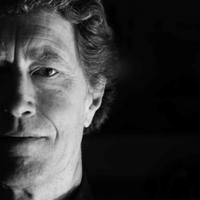I’m 66 years old, and I have an implanted defibrillator.
I don’t go to gyms, nor do I run marathons. Nineteen years ago, an orthopedic doc pulled up an Xray of my knee and showed me the unmistakable, berm-like signature of osteoarthritis at the top of my tibia.
“Your running days are over,” he announced with finality.
I’ve been running ever since. I have even entered a few 5K and 10K citizen races in my hometown of Jackson Hole, Wyoming, a western base camp for the uber-fit, and in my age grouping I’ve done pretty damn well. How could that be?
I re-tooled the way I ran.
With little instruction, initially, I began to adjust my stride and posture, reducing impact on my joints. And, I came across the common sense teachings of Dr. Mark Cucuzzella, known as Dr. Mark on the Eastern seaboard, a tireless advocate for getting people of all ages and abilities outdoors—moving, breathing, absorbing nature, and yes, running.
Running correctly, that is. At any one point in time, nearly half of all Americans who refer to themselves as runners are injured. (Many, as I was, are overconfident that they know all there is about the activity.)
It doesn’t need to be this way. In his new book, Run for Your Life: How To Run, Walk, and Move Without Pain or Injury and Achieve a Sense of Well-being and Joy, Dr. Mark demonstrates how we can avoid “putting pain into our bodies,” and find a zone of physical and mental peace.
How to run, walk, and move without pain or injury:
Let’s start with posture. Most of us slump when we stand, settling into the now-prevalent “texting position.” And we sit for hours on end, a habit that recent medical studies show is worse for us than we thought. Next, let’s walk. Even that we tend to do improperly—heel striking, bent over, without balance and crispness of gait.
Running is the next step. When it comes to running form, Dr. Mark distills his advice into five simple instructions:
>> Maintain proper posture. Look straight toward the horizon. Plant your feet flat on the ground. This is your neutral posture, a position of balance and strength.
>> Maintain a strong and stable core. Strong and active abdominal muscles and diaphragm, stable pelvis and hips stabilizers, and powerful glutes allow for the greatest energy transfer to and from the ground.
>> Use your arms and hands to set your rhythm. Keep your elbows at an angle of 90 degrees or less, and drive the elbows back.
>> Ensure that your feet actively moderate the impact. Each foot should land, with the full foot making contact, close to the point directly below your center of gravity.
>> Maintain cadence, or rhythm. Efficient, springy runners have a cadence close to 180 steps per minute.
There’s the footwear, too. Fancy running shoes with beefy cushioning, motion control, narrow toe boxes, and elevated heels only encourage (or force) the foot to act in an unnatural way. Elevated heels alone can set the body’s entire kinetic chain—from legs, to hips, to spine, to neck—out of whack.
Picture slightly lifting the edge of a balanced set of building blocks. Each block will need re-adjustment to compensate. The solution: try zero-drop, minimal shoes—but transition to them slowly. Free the foot! It’s a functional masterpiece, the result of several hundred thousand years of evolution.
Of course, diet and nutrition play a role in healthy running and movement. After urging readers to not diet (no diet based on self-motivation has ever worked—though failed willpower makes for a great business model), Dr. Mark suggests we confine ourselves to the fresh produce, meat, and full-fat dairy found on the perimeters of the local grocery store. (Healthy fat features a near-magical ability to satiate appetite.) A good head start to a healthy diet is to simply avoid food products containing added sugar.
Most critically, Dr. Mark is committed to getting people outside.
To that end, he helped develop a series of citizens’ races and fun runs, as well as the Park Rx initiative. One simple intervention doctors can make, he says, is to have the receptionist enter a patient’s ZIP code into a program, and print out a map of nearby parks for them before they leave the office. (America’s epidemic of nature deficit disorder is being explored this October in Jackson Hole, which is hosting the annual SHIFT Conference, dedicated to the public health benefits of time spent recreating outdoors.
Our goal should not be to chase the grail of extending the lengths of our lives, Dr. Mark says, but to extend our functional lifespans—our total years of healthy, productive, enjoyable living. Hopefully, I’m not the only active citizen of my age who is still planning ahead—far ahead—for middle age. I don’t feel it has reached me just yet.
~







Read 0 comments and reply